A Tick More Familiar
How a Mühle Watch is Born
Precision is not only part of our family tradition, it determines everything we do: Already in the production of parts, all workpieces are manufactured with an accuracy of one thousandth of a millimeter; with a steady hand and a careful eye, they are finished to the finest detail in the finishing department and finally assembled into a precisely running movement in the assembly department. In this way, each watch is lovingly handcrafted in a multitude of steps.
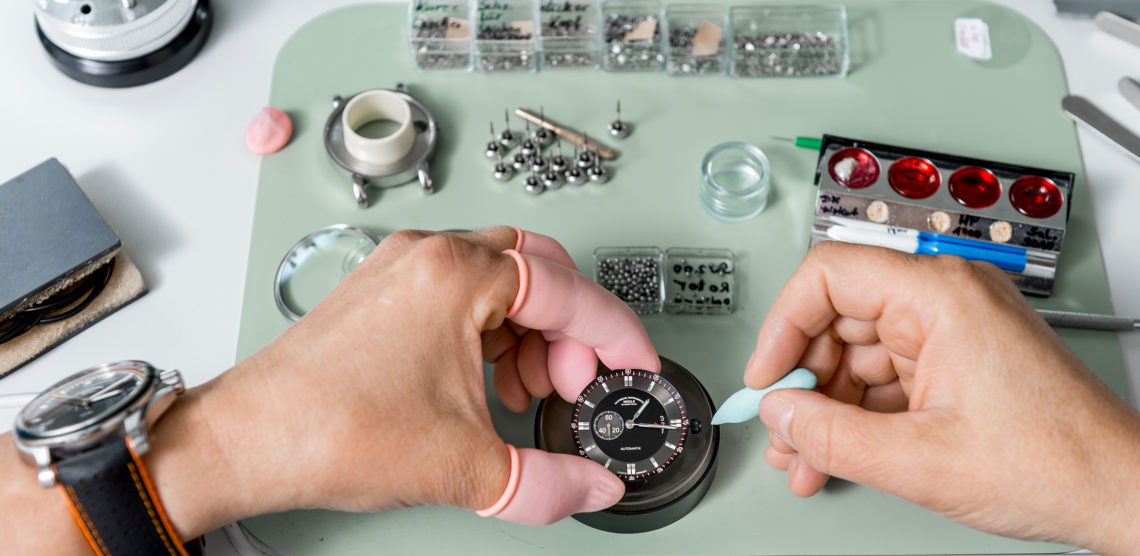
WHAT A MÜHLE WATCH SHOULD LOOK LIKE
Design
Like our nautical instruments, our wristwatches are also time-measuring instruments, which is why we focus on the three nautical virtues of precision, reliability and good readability when developing new timepieces. In this we see the elementary tasks of a watch, behind which all other functions have to take a back seat.
The design of the dials, hands and cases is therefore largely a matter for the boss, and so our watches are designed in-house by a small design team led by Thilo Mühle.

WHAT MAKES A MÜHLE MOVEMENT STAND OUT
MOVEMENTS
In a family business, the development of new movements is also largely in the hands of the family.
Which complications are useful for a Mühle watch? What characteristics must a movement have?
A “Mühle” is still the best judge of that. Together with our engineers they are creating special new movements & complications.

WHY WE MAKE OUR COMPONENTS OURSELVES
PARTS MANUFACTURING
We place the highest demands on the quality and precision of a watch movement. That is why we manufacture components for our wristwatches ourselves. Using state-of-the-art CNC machining centers, we are able to manufacture the components we design to within a thousandth of a millimeter.
These are then further processed by hand into a ready-to-assemble workpiece, with precise checks at every step to ensure that they correspond exactly to our ideas. This is a result of our tradition. After all, it was Robert Mühle who began manufacturing measuring instruments for the Glashütte watch industry in 1869.
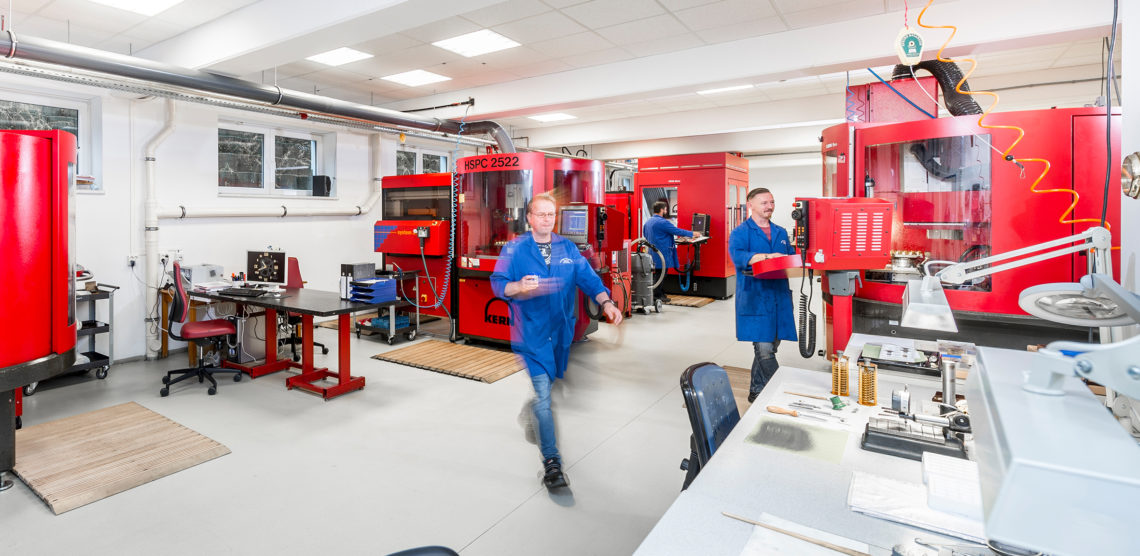
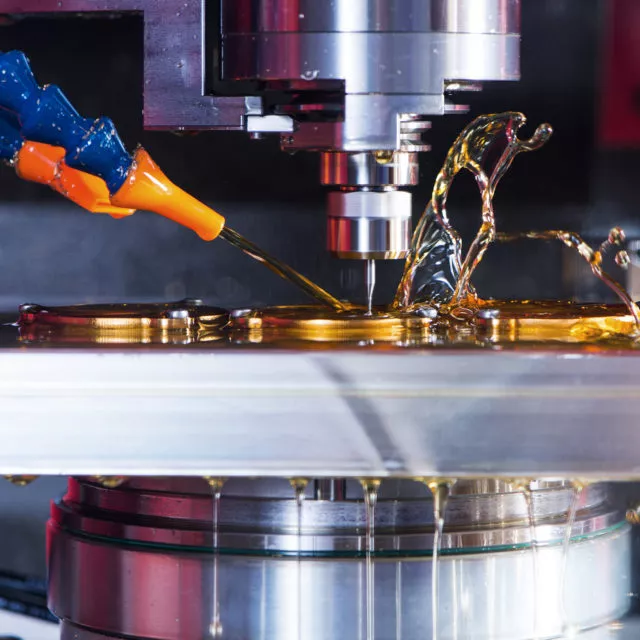
ACCURATE TO A THOUSANDTH OF A MILLIMETER
PARTS MANUFACTURING
We use our CNC machining center to produce plates, bridges, cocks and other flat parts for our movements.
With over 40,000 revolutions per minute, the milling head drills into the brass base carrier. The heat generated in the process is cooled with special cutting and lubricating oil. At the same time, the fluid removes chips from the workpiece.
1/1000 MILLIMETER
PRECISION DOWN TO THE NEAREST THOUSANDTH OF A MILLIMETRE
Trust is good, control is better: After production, the blanks are released and prepared for further processing in the finishing department.
This includes measuring the blanks just produced in spot checks to ensure that all parts of the movement harmonize perfectly with each other during subsequent assembly.
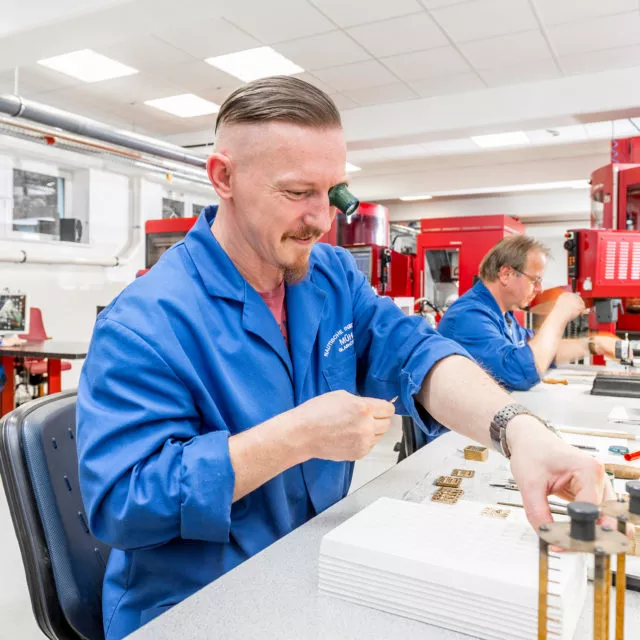
WHY A THOUSANDTH OF A MILLIMETRE ISN’T PRECISE ENOUGH
FINISHING
Even though we manufacture parts on our CNC machining centers to within a thousandth of a millimeter – without the expert hand of our finishers, we would not be able to produce an accurate watch. In the first step, each workpiece is deburred by hand and then, in several steps, completed with a specially designed finish.
All the work is first of all aimed at making our timepieces more precise and reliable. Thus, the ornaments fulfill not only aesthetic but also functional requirements. Functional aesthetics is what we call it.

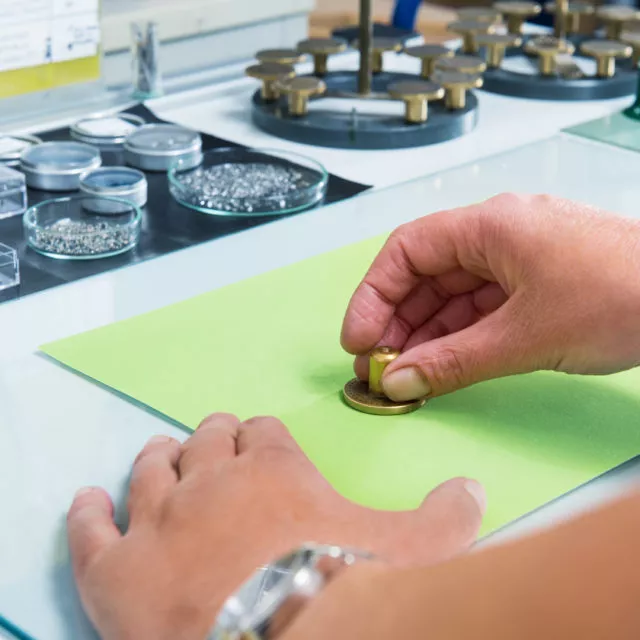
BEAUTIFUL AS WELL AS FUNCTIONAL
POLISHINGS
All moving parts in a watch movement are subject to a certain amount of wear – but the smoother the gear train runs, the less of it. That is why metal surfaces are compacted, hardened and polished.
The polishes provide the surface of levers and springs with more density and tension in the process: for the benefit of greater accuracy.
PLAY OF COLORS
BLUED SCREWS
The attractive colour of our blued screws also has a functional purpose. The bluing process, also known as tempering, helps to provide extra corrosion protection. In the process, the screws are heated to a temperature of 300° Celsius, which gives them their stunning blue colour.
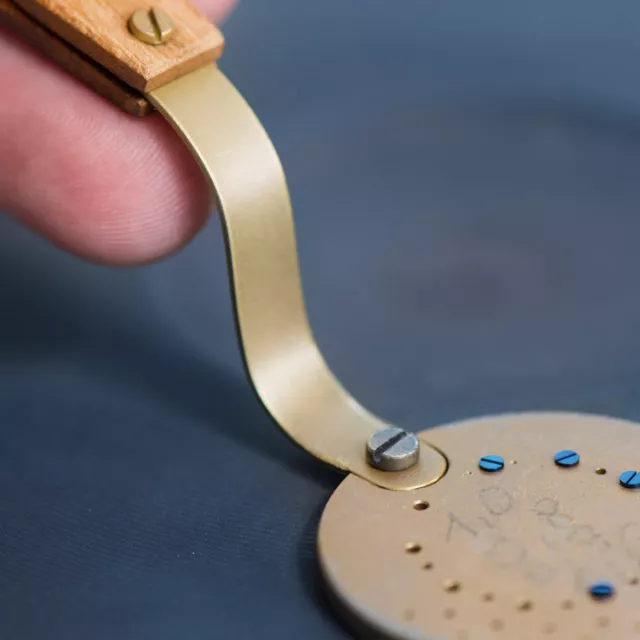
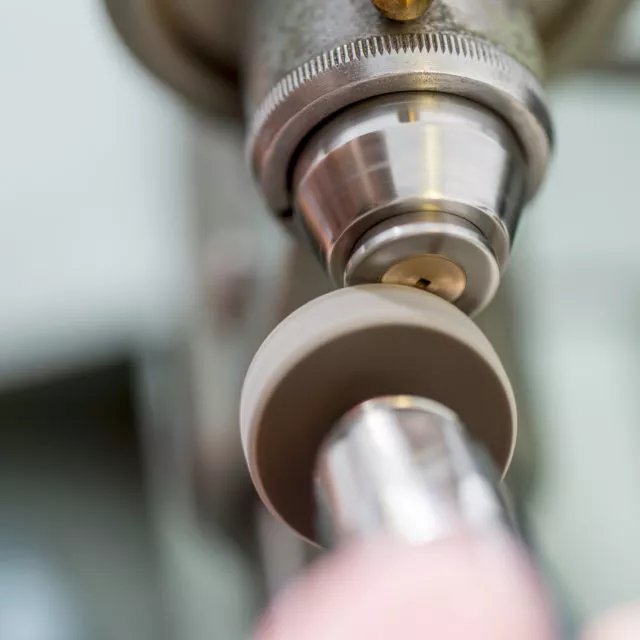
DECORATIVE
GRAININGS
In addition to functional finishes, we also use cuts for traditional reasons to embellish the movement, such as the Glashütte sunburst cut. These cuts are applied by hand and make each watch unique. In the past, they also had a specific function: they were used to remove machining marks that occurred when the parts were sawn out or drilled by hand.
WHY OUR WATCHES ARE ALWAYS SLIGHTLY FAST
ASSEMBLY AND REGULATION
With our watchmakers, a movement comes from the best hands. Because we see each of our movements as an individual and treat it as such. During assembly, our watchmakers first assemble the individual components into various subassemblies, which are then assembled into a complete movement.
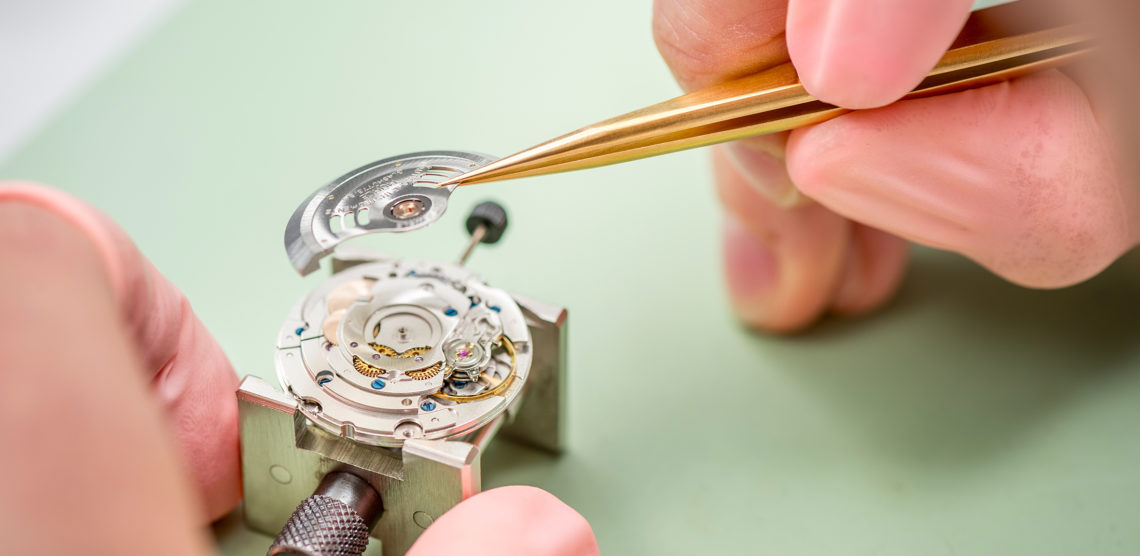

LISTEN TO WHO IS HAMMERING
WOODPECKER NECK FINE ADJUSTMENT
Shocks are a problem, but not for us.
Our patented fine adjustment for the neck of the woodpecker additionally prevents the regulator arm from moving upwards. This makes our fine adjustment much more shock-proof than classic adjustments.
THE CROWNING GLORY
MOUNTING OF THE ROTOR
The crowning touch to the assembly of our automatic movements is the attachment of the rotor. It consists of the oscillating weight and a center segment engraved with the Mühle logo and decorated with the Glashütte sunburst.
Once the fastening screw has been tightened to a precisely defined torque, the movement is ready for the regulating position.


DECORATIVE
GRAININGS
In addition to functional finishes, we also use cuts for traditional reasons to embellish the movement, such as the Glashütte sunburst cut. These cuts are applied by hand and make each watch unique. In the past, they also had a specific function: they were used to remove machining marks that occurred when the parts were sawn out or drilled by hand.
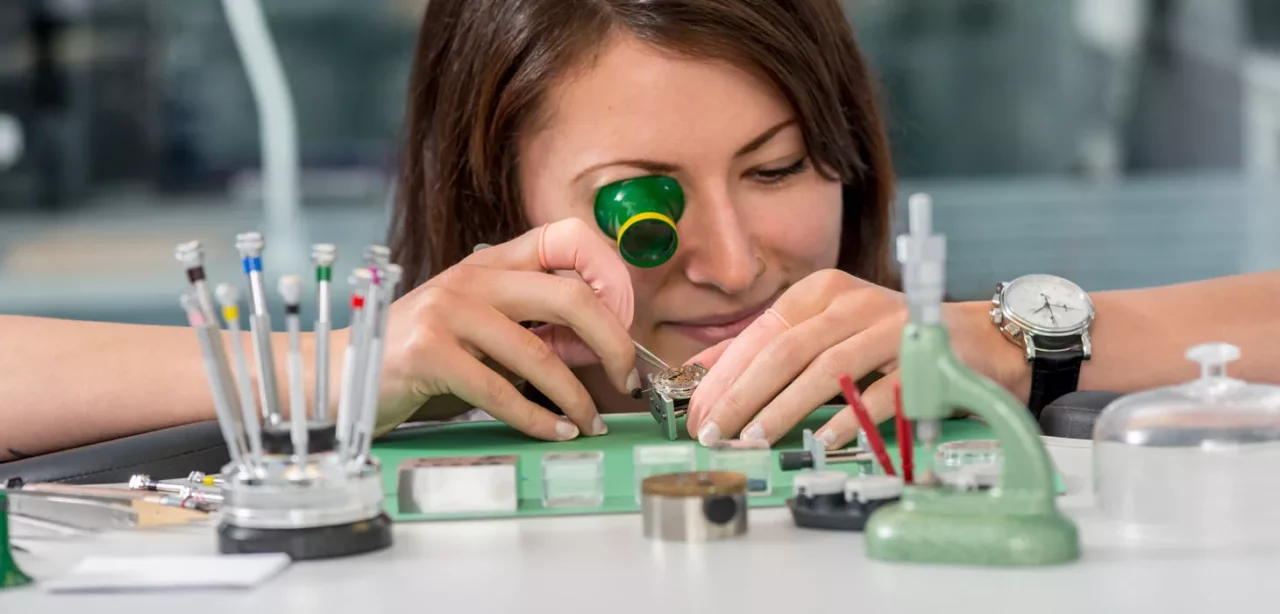
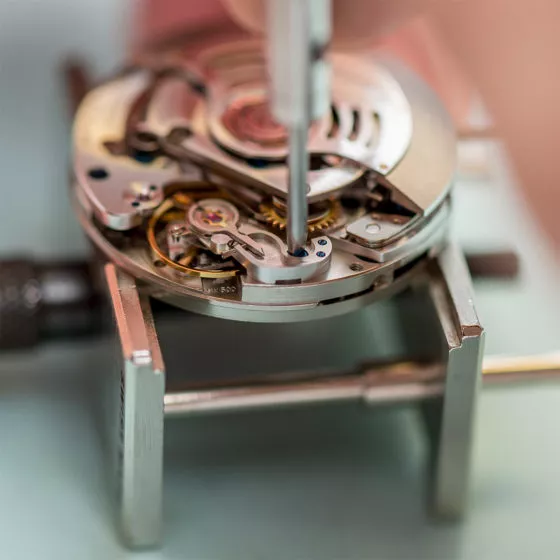
ELABORATE REGULATION
TESTING IN SIX POSITIONS
After a movement has been fully assembled, we check its rate on the time balance in all six positions – i.e. in every position that a watch can take on your arm. In the process, the advance or retard of the movement is precisely measured and recorded. Our watchmakers then adjust the movement so that the overall rate deviation is the smallest.
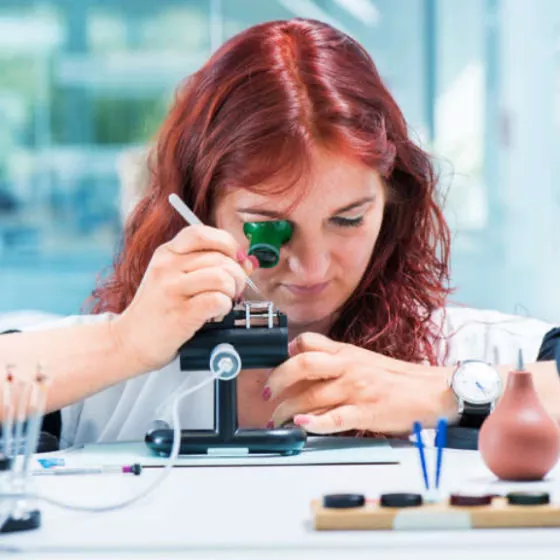
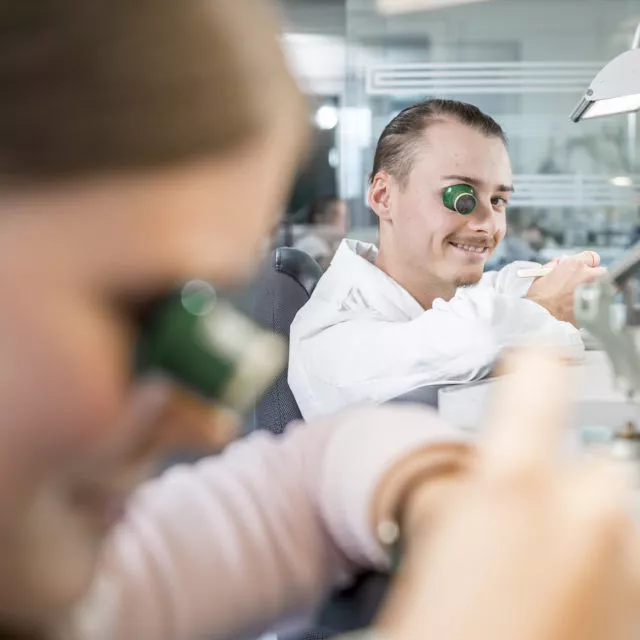
PARTICULARLY POLITE
HOUSE-INTERN REGULATION REQUIREMENTS
We regulate each watch so that its rate is between 0 and a maximum of 8 seconds per day and thus slightly in the plus range. The complex regulation is based on the one hand on the chronometer standard and on the other hand on an internal guideline: Because it is part of the philosophy of our company that the wearer of a Mühle watch should not be late because of his watch.
HOW METICULOUS WATCHMAKERS CAN BE
FINAL INSPECTION
After the movement has been regulated and its functions have been completely checked once again, it is put into operation: that is, the dial and hands are put on and everything is inserted into the case together.
Now the new Mühle watch is ready for the big wide world. Almost, anyway. Because before a watch leaves our factory, it has to prove its qualities in a meticulous final inspection. For almost a whole week, our master watchmakers test the timepiece for accuracy, water resistance and flawless beauty, among other things.

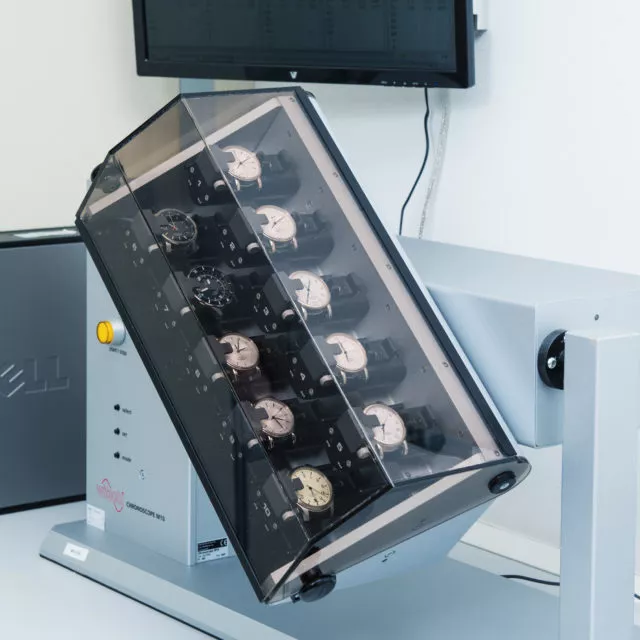
TOLERANCES
CHECKING PRECISION
While the movement was checked in six layers during regulation, the complete watch is tested during final inspection.
NAUTICAL VIRTUE
WATER RESISTANCE TESTING
Of course, checking the water-resistance is particularly important to us. For this purpose, every watch is subjected to overpressure. With highly sensitive measuring instruments, we can detect even the smallest defects.
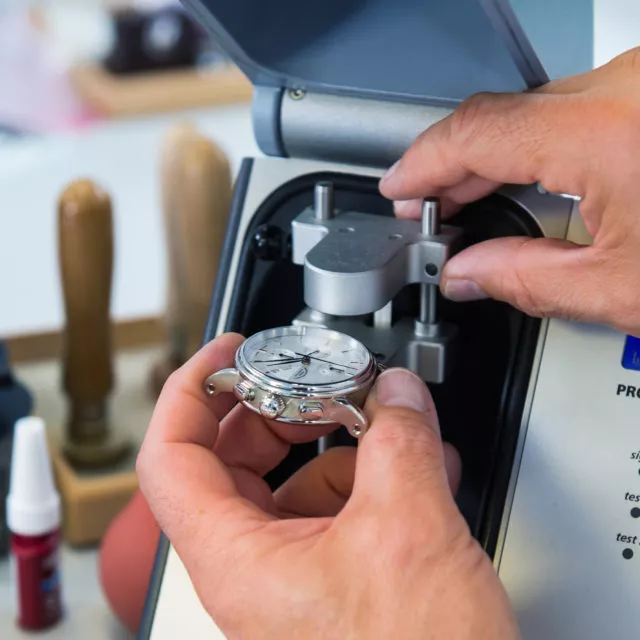
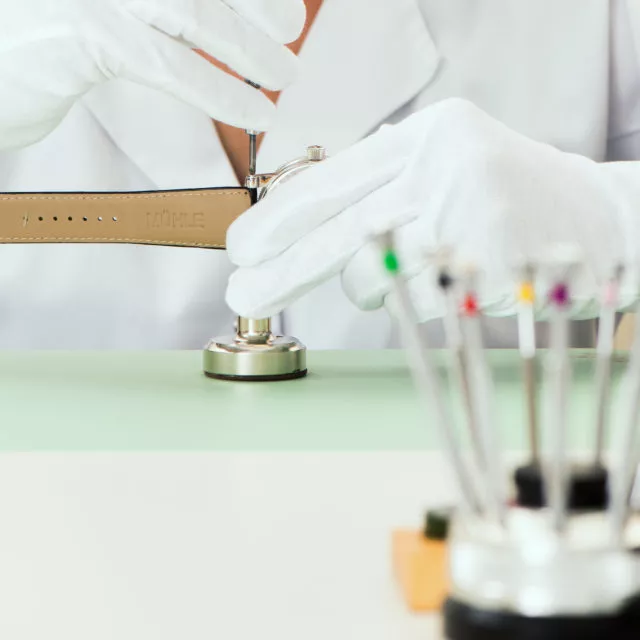
LAST STEP
ATTACHING THE STRAP
When a Mühle watch has passed all the tests in the final inspection, the strap is assembled. But even after that, we still perform a final visual inspection. Then the watch is packed in its case and we hope you enjoy it.
